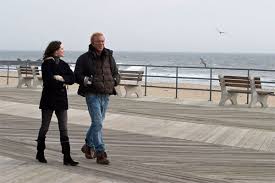Angela Hewitt brought the depth of her humanity, and dare we say it, a touch of divinity in her accounting of Bach’s Goldberg Variations
She very generously preceded her
The last time she was in
Ms. Hewitt touched on historical notes to begin, the fabled gold goblet filled with coins with which Bach was apparently paid for the work (possibly a myth, no such item found among his effects at his passing), the fact that the work was so difficult it had not been played in public for more than 100 years after its writing (according to Grove’s dictionary, 1889), comments by interpreters Landowska, Tureck and Gould. She commented on Bach’s representation of pain, suffering, even the crucifixion using descending scales, minor keys and the like, but said that “ultimate despair was not in Bach’s mindset, his faith in an afterlife was ever present.”
Then she sat down to the piano, and worked through highlights of the work. Variation 3 “an outburst of irrepressible joy” (per Landowska), variation 13 “takes us up there,” variation 25, “the black pearl,” the longest and hardest variation where the keyboardist is called upon to “empty oneself,” variation 28 foretelling “late Beethoven,” and then the quodlibet folk tune speaking of something like if mother had prepared more meat I would have stayed, but “beets and spinach drove me away.” Bach the lofty, high-minded, otherworldly prophet, ending it all, with a commonplace equivalent of ‘where’s the beef?’ What could be more….Zen?
Turning the page of her extremely well-worn urtext edition, a fragment came off in her hand, causing a bit of laughter in the audience when she held it aloft. Ms. Hewitt said she would have to tape it back together.
All in all, the artist brought a sense of scholarship, artistry, humanity, humor and energy to her lecture, but the main course lay just ahead, where she would add her courage and stamina, which are prodigious (in October 2008 she completed her Bach World Tour where she played the 48 preludes and fugures of the Well-Tempered Clavier -- by heart -- more than 50 times!, so she knows all about courage and stamina).
Thirty minutes later, downstairs in the main hall, taking most all repeats, Ms. Hewitt traversed what many consider the greatest keyboard work of all time in one hour, twenty minutes, twenty minutes longer than most who do not take the repeats. Nary a note was out of place, the voicings were always clear, singing, unmistakable. She said in her pre-concert remarks that the trick was to make this “sound easy.” Indeed, she did. The N.Y. Times has called her playing "crystalline", she achieves this with minimal use of pedal. That, and her depth of passion, make her playing unforgettable.
She held the silence following the ending note for a full 30 seconds, and then was engulfed with a tsunami of roaring applause, cheers and standing patrons. Many curtain calls followed; surely it was too much to ask for an encore after such a traversal. In fact, it would be wrong to tack something onto the end of something this grand, this magnificent, this “complete,” as Ms. Hewitt had earlier called the final restatement of the Goldberg theme, no?
As it turns out, no.
Ms. Hewitt obliged the still-hungry crowd with perhaps the only encore that would have felt “right” at this exalted point, i.e. Bach’s own Jesu Joy of Man’s Desiring.
It was the perfect spiritual counterweight – this time in sound -- to her earlier comments on Bach’s faith.
And so it was on this late spring afternoon in Chicago, that this daughter of an Ottawa cathedral organist, named for God's helpers it was pointed out to me, who had graced her many fans and patrons with the depth of her humanity in lecturing and her impeccable playing, left them with a touch of divinity.
Read her blogs – and her own account of her
Postscript: I have just finished listening to her GV recording; this would be my proverbial desert island disc, had I to choose but one, without question..........








